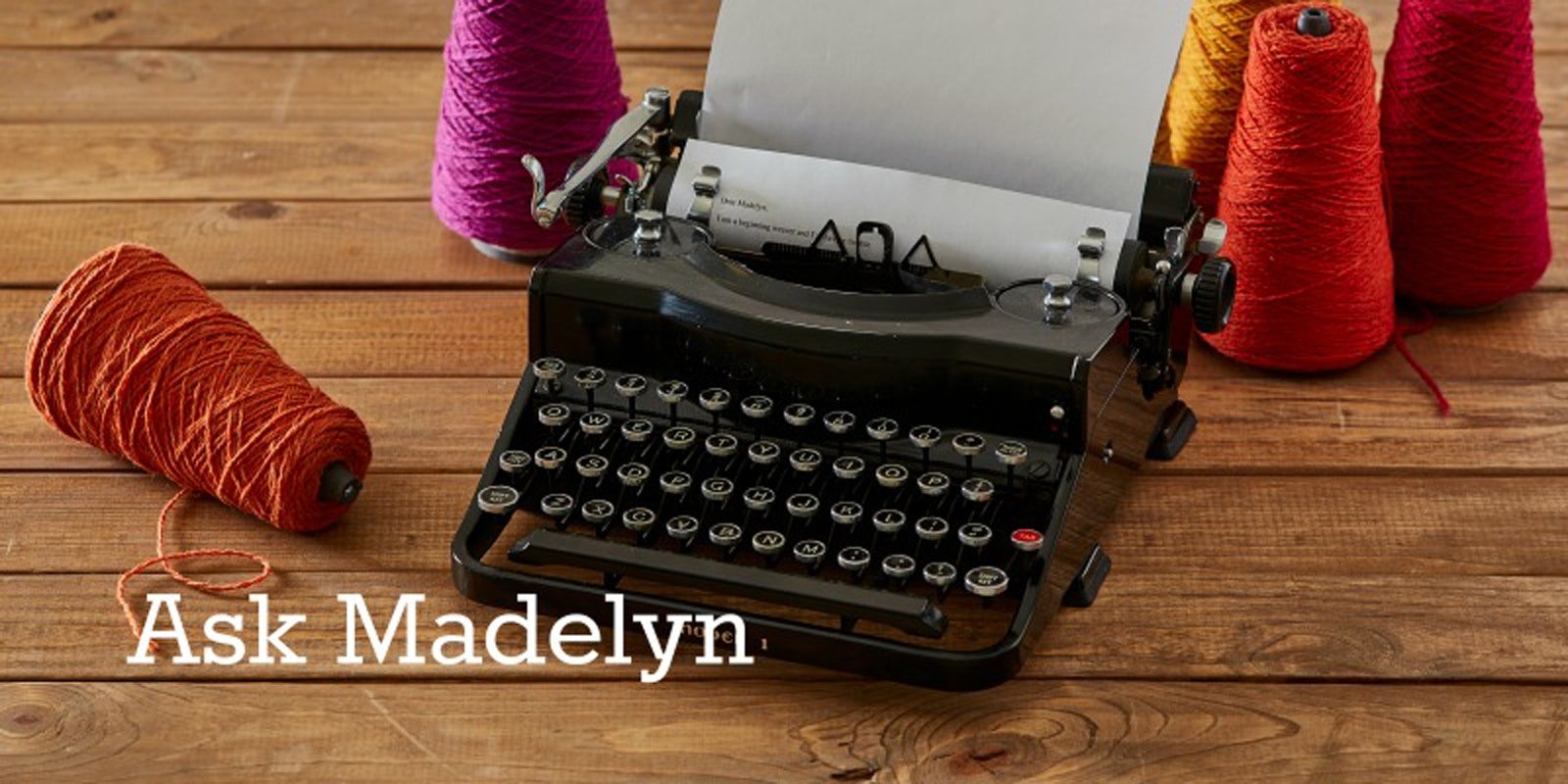Hi Madelyn! You often mention using a temple in your posts. I don't have one and don't have issues with my selvedges. I have a little draw-in at the heading of my weaving, but after that, the width is consistent. The difference in width between beginning, middle, and end of my yardage is maybe an eighth of an inch. I also rarely break warp threads, and when I do, it is almost always because of a flaw in the yarn (slub or underspun) and not near the selvedge. Have you ever compared the results with and without a temple. For instance, how do shrinkage and draw-in with and without a temple compare after wet finishing? Are the results comparable with plain weave and twill? Thanks! Beki
Hi Beki!
Your question is a good one. In essence, you are asking whether weavers really need to use a temple. The answer is, as is so often the case, it depends.
What a Temple Does Not Do
First, a temple does not prevent draw-in. Draw-in can happen whether you use a temple or not. Draw-in is caused by insufficient length in the weft. If you picture the weft as it is placed in an open shed, it goes straight through the shed in a single plane. When the beater presses the weft to the fell, however, the weft has to move out of that flat plane to go up and down, over and under the warp threads, over if they were down, under if they were up. After beating, the warp threads are in the flat plane and it’s the weft that is no longer flat. There must be enough extra length in the weft originally placed in the open shed to accommodate that final over-and-under path. If that extra length is not there, draw-in will happen, temple or no.
What a Temple Does
What the temple does do is spread the cloth itself (for the two inches or so below the fell) to the width of the warp in the reed. This has two advantages. One is that the weft can be turned firmly at the selvedge without pulling in the warp threads there and crowding them. The second is that the reed can move through the warp threads without rubbing on them. Because the temple has spread the cloth to the width of the warp in the reed, the warp threads are all parallel to each other. Since the reed can move through the threads without rubbing, it is less likely to abrade and possibly break them. The beat itself can also be more firm with the temple in place. If the reed rubs against warp threads as it moves to the fell, the friction they create will slow its movement making it harder to get a firm beat—a firm beat needs force; force equals mass (the weight of the beater) times acceleration (its speed).
temples
If you weave with relatively moderate tension and don’t have excessive draw-in (from not enough weft length), there is no need to use a temple. Firm warp tension will increase the potential for warp-thread abrasion, but the specific weave structure, warp yarns, amount of draw-in, and weft density are all factors that may or may not contribute to needing one. Warp width is also a factor. I don’t usually use a temple on weaving widths less than ten inches nor for extremely open weaves with delicate yarns. For most everything else, however, I like using a temple. Because the reed moves so freely and consistently in the cloth, I find it easier to maintain an even beat with the temple in place. A temple has some disadvantages, the biggest being that it covers the weaving you have just done. It also has sharp teeth that sometimes bite you.
In summary, if you are happy with your results and have not find any need for a temple, I’d say don’t use one. The final fabrics, those woven using a temple vs those woven without it, should not really be that different. Their widths depend on the amount of weft in the shed more than on the fact of the temple’s presence during weaving. This might not be quite so true for weft-faced rug weaves. For those, I think the temple really aids in keeping the width of the rug closer to the width of the warp (in addition to its importance in allowing a very firm beat).
Madelyn
If you have a weaving question we would love to hear from you! Please email Madelyn! May/June 2017. View related & recent "Ask Madelyn" posts!


